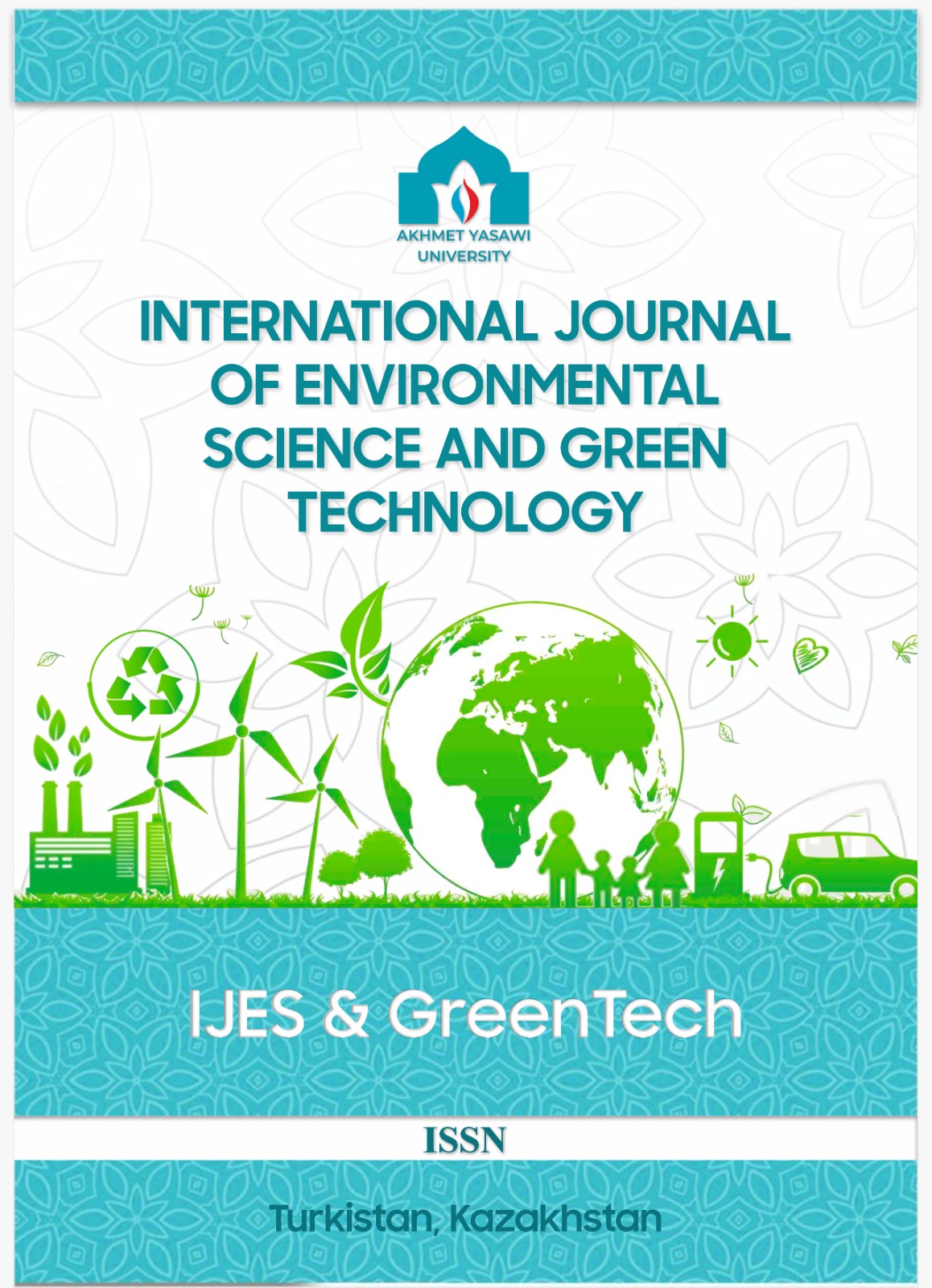Biohybrid Systems for Waste Valorization: Synergizing Synthetic Biology and Green Engineering to Enable Circular Resource Recovery
289 169
DOI:
https://doi.org/10.5281/zenodo.15744746Ключевые слова:
synthetic biology, waste valorization, biohybrid systems, circular economy, green engineeringАннотация
The increasing global momentum toward sustainable development has highlighted the imperative to convert waste flows into new value streams. This review discusses the novel paradigm of biohybrid systems that synergize synthetic biology, bioprocess engineering, and green chemistry to facilitate circular resource recovery from agricultural, industrial, and municipal wastes. Synthetic biology makes it possible to design genetically engineered microbes for enhanced bioconversion of recalcitrant waste substrates, and green engineering design makes it possible to design scalable, energy-conserving bioreactors and catalytic systems. Here, a critical analysis of system architectures like microbial consortia, biosensors, and metabolic pathway reengineering and their integrated functions towards valorizing carbon-rich residues to biofuels, organic acids, and bioplastics is covered. Case studies highlight successful lab-to-pilot scales, with a demonstration of their technical feasibility and their environmental benefits. However, there are challenges involving standardization, process optimization, and regulatory frameworks. This review invites interdisciplinarity to transcend the current challenges and facilitate the installation of robust, modular waste-to-resource technology. Integration of these technologies can revolutionize closing the loop on world waste and minimizing environmental contamination.
Библиографические ссылки
Agapakis, C. M., Boyle, P. M., & Silver, P. A. (2012). Natural strategies for the spatial optimization of metabolism in synthetic biology. Nature Chemical Biology, 8(6), 527–535.
Armstrong, R. (2023). Towards the microbial home: an overview of developments in next‐generation sustainable architecture. Microbial Biotechnology, 16(6), 1112–1130.
Bassalo, M. C., Liu, R., & Gill, R. T. (2016). Directed evolution and synthetic biology applications to microbial systems. Current Opinion in Biotechnology, 39, 126–133.
Coskun, A. (2021). Identification of different user types for designing household food waste interventions. International Journal of Sustainable Engineering, 14(4), 609–617.
Cudjoe, D., & Han, M. S. (2021). Economic feasibility and environmental impact analysis of landfill gas to energy technology in African urban areas. Journal of Cleaner Production, 284, 125437.
Das, I. (2024). Bioelectrochemical systems (BES) for wastewater treatment. In Biological and Hybrid Wastewater Treatment Technology: Recent Developments in India (pp. 383–401). Cham: Springer Nature Switzerland.
Ebadi, A. G., Boufahja, F., Al Sulivany, B. S. A., & Selamoglu, Z. (2025). Fish as bioindicators: Monitoring environmental mercury pollution with aquatic food webs – A mini review. International Journal of Environmental Science and Green Technology, 1(1), 56–65.
França, W. T., Barros, M. V., Salvador, R., de Francisco, A. C., Moreira, M. T., & Piekarski, C. M. (2021). Integrating life cycle assessment and life cycle cost: A review of environmental-economic studies. The International Journal of Life Cycle Assessment, 26, 244–274.
Gonzalez, G. A. (n.d.). Synthetic biology approaches for the valorisation of waste streams (Doctoral dissertation, The University of Manchester, United Kingdom).
Khalil, A. S., & Collins, J. J. (2010). Synthetic biology: Applications come of age. Nature Reviews Genetics, 11(5), 367–379.
Khan, D., Jung, L. T., & Hashmani, M. A. (2021). Systematic literature review of challenges in blockchain scalability. Applied Sciences, 11(20), 9372.
Khan, I., & Hou, F. (2021). The impact of socio-economic and environmental sustainability on CO₂ emissions: A novel framework for thirty IEA countries. Social Indicators Research, 155(3), 1045–1076.
Kiran, B. R., Prasad, M. N. V., & Mohan, S. V. (2024). Synthetic biology: An emerging field for developing economies. In Bioremediation and Bioeconomy (pp. 767–787). Elsevier.
Ko, Y. S., Kim, J. W., Lee, J. A., Han, T., Kim, G. B., Park, J. E., & Lee, S. Y. (2020). Tools and strategies of systems metabolic engineering for the development of microbial cell factories for chemical production. Chemical Society Reviews, 49(14), 4615–4636.
Kundu, D., Dutta, D., Samanta, P., Dey, S., Sherpa, K. C., Kumar, S., & Dubey, B. K. (2022). Valorization of wastewater: A paradigm shift towards circular bioeconomy and sustainability. Science of the Total Environment, 848, 157709.
Miehe, R., Bauernhansl, T., Beckett, M., Brecher, C., Demmer, A., Drossel, W. G., Elfert, P., Full, J., Hellmich, A., Hinxlage, J., & Horbelt, J. (2020). The biological transformation of industrial manufacturing – Technologies, status and scenarios for a sustainable future of the German manufacturing industry. Journal of Manufacturing Systems, 54, 50–61.
Naseri, G., & Koffas, M. A. (2020). Application of combinatorial optimization strategies in synthetic biology. Nature Communications, 11(1), 2446.
Palladino, F., Marcelino, P. R., Schlogl, A. E., José, Á. H., Rodrigues, R. D., Fabrino, D. L., Santos, I. J., & Rosa, C. A. (2024). Bioreactors: Applications and innovations for a sustainable and healthy future — A critical review. Applied Sciences, 14(20), 9346.
Sahoo, P. C., Pant, D., Kumar, M., Gupta, R. P., & Srivastava, U. (2024). Unraveling the potential of solar-bioelectrochemical CO₂ conversion for third generation biorefineries. Current Opinion in Electrochemistry, 101513.
Sheldon, R. A. (2024). Green chemistry and biocatalysis: Engineering a sustainable future. Catalysis Today, 431, 114571.
Testa, C. J., Hu, C., Shvedova, K., Wu, W., Sayin, R., Casati, F., Halkude, B. S., Hermant, P., Shen, D. E., Ramnath, A., & Su, Q. (2020). Design and commercialization of an end-to-end continuous pharmaceutical production process: A pilot plant case study. Organic Process Research & Development, 24(12), 2874–2889.
Troise, C., Testa, S., Battisti, E., & Cincotti, S. (2025). Crowdfunding food waste related campaigns: The role of waste hierarchy classification and target market. Finance Research Letters, 74, 106745.
Yin, H., Qu, Y., & Jia, H. (2024). Target setting and performance analysis: Promoting e-waste collection in China under the collection target responsibility models. Journal of Environmental Management, 356, 120652.
Young, K., Kochanek, S., Silveira, G., & Jack, J. (2025). Will biohybrid or tandem CO₂ electrolysis prevail? Chem Catalysis, 5(4).

